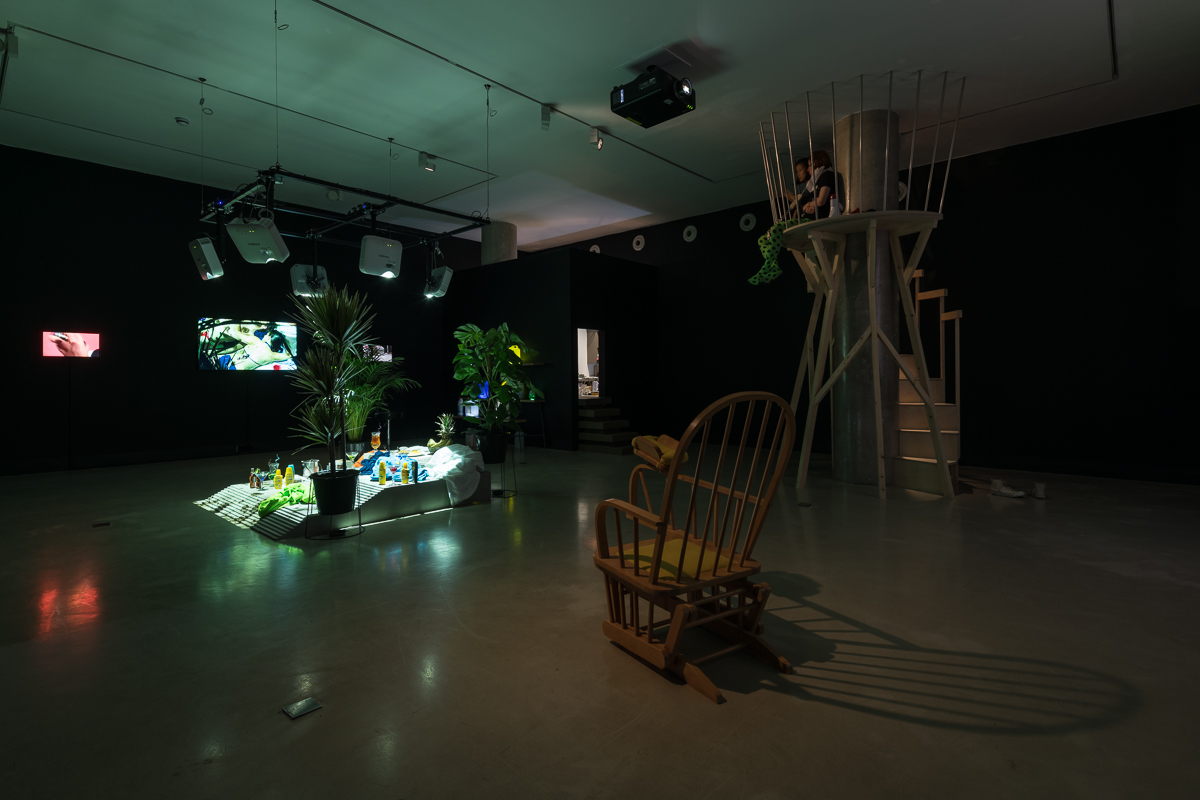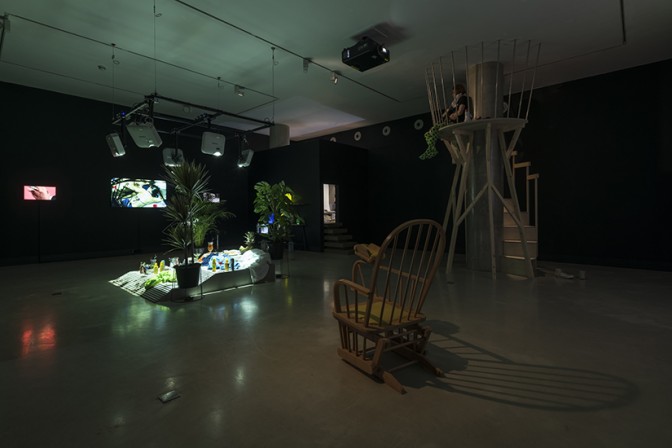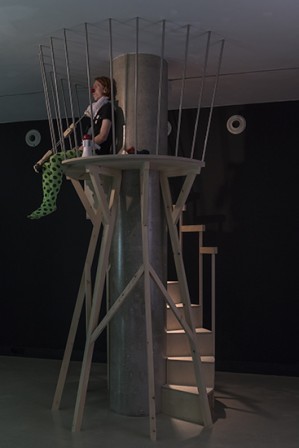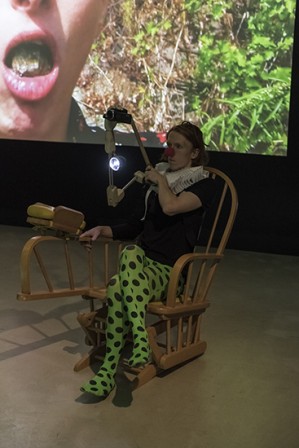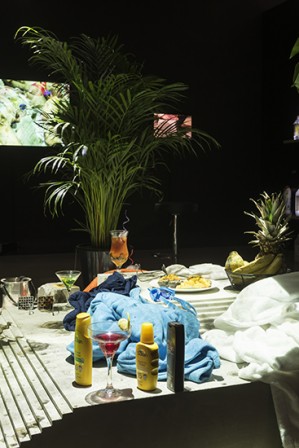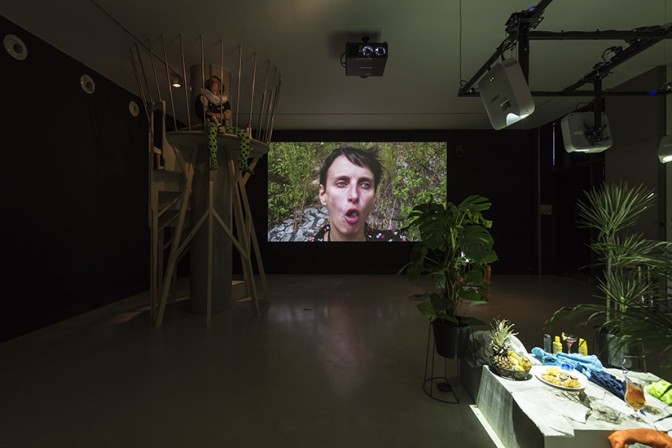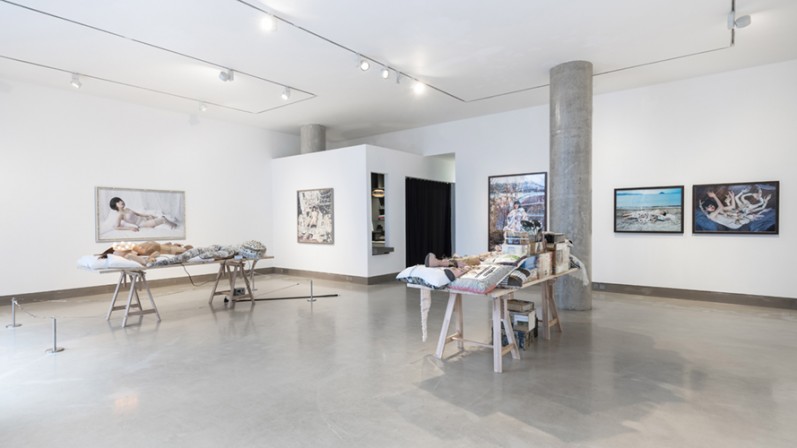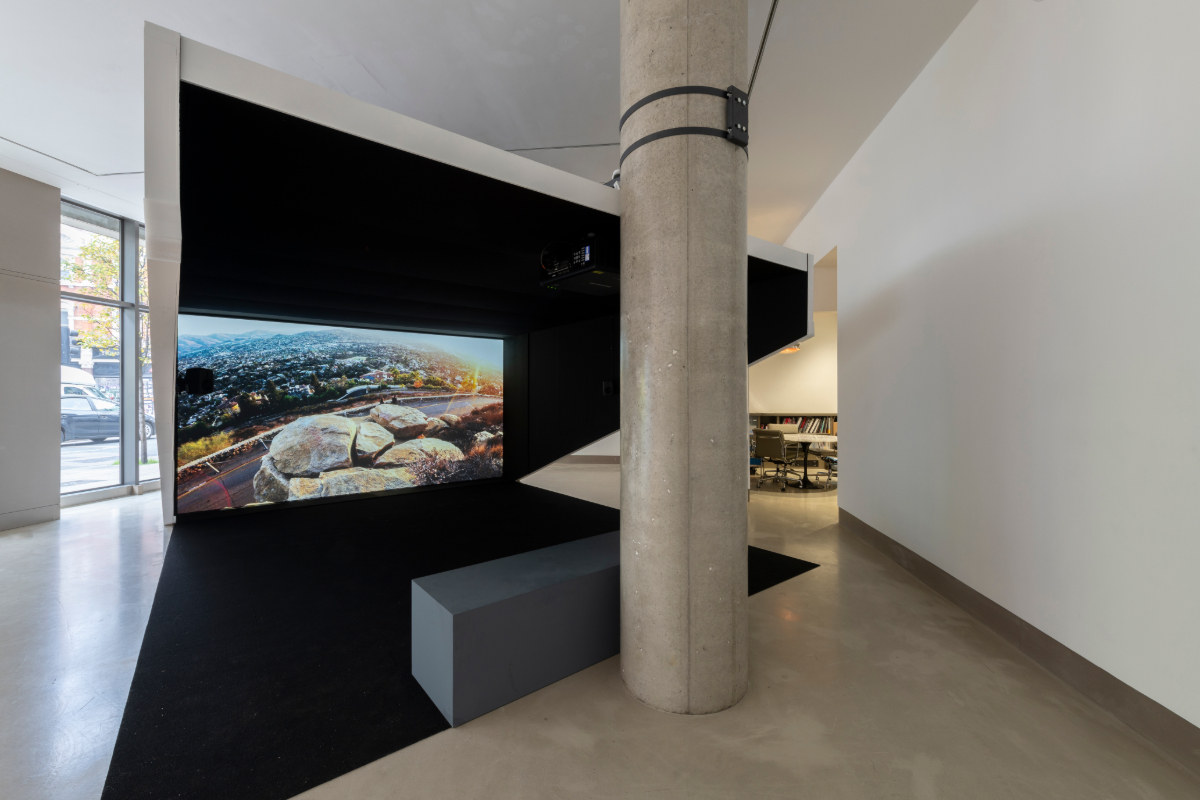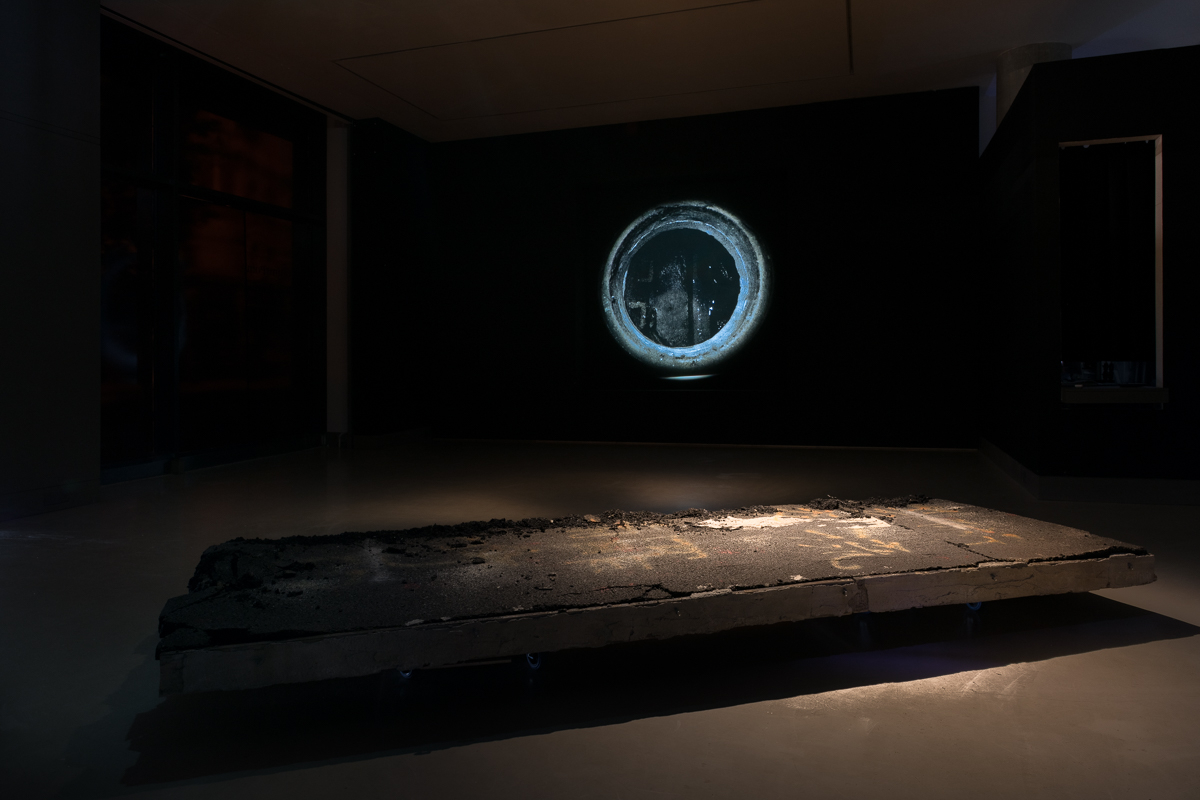My eyes are not in the centre, an expansive new installation at White Rainbow, Fitzrovia, London by Taro Izumi. The artist’s first UK solo exhibition.
Comprised entirely of new work, Izumi’s exhibition constructs a complex web of interactions mediated through technology, evoking digital and new media’s dissociative effects on the senses. How does perceptible reality change when first hand experience is outsourced to a lens? Minor actions are captured on camera, then broken down and reconstituted – original footage is isolated, reversed, compartmentalised and made strange. The exhibition’s title alludes to this disorientated vision; symptomatic of life lived increasingly through a screen.
Based in Tokyo, Izumi (b. 1976, Nara, Japan) is one of Japan’s leading artists working with multimedia and collaborative practice. Izumi’s large structural works are often made up of simple, familiar objects, constructed in such as way as to transform the everyday into the absurd. His playful, almost childlike works often conceal undertones of dark humour and irony.
Across the exhibition, familiar items and scenes don’t seem quite right. A bartender insistently chisels a block of concrete with an ice pick; a group of people sunbathe at a tropical resort. Yet look closer at this confected beach scene – the concrete stage set adorned with fake fruit and other synthetic props becomes a gross simulacrum. The figures on the adjacent monitor pursue a suntan that will never come, as the rays that land on them come instead come from the light of five projectors overhead. The setting is Black Mirror does Club Tropicana, chipping away at a lucid-seeming reality.
Across his practice, Izumi uses video as a recursive apparatus for exploring the mechanisms of art-making, while also commenting on the materiality of video by combining it with structural and architectural interventions into the exhibition space. Made with disarmingly simple materials, these structures are often used in the production of the videos, creating a feedback loop between space and video, production and reception, recorded time and real-time.
This exhibition sees Izumi focus for the first time on the impact of drone technology. The artist humorously bastardises the concept of the drone as unmanned and automated by reinserting a human presence into the chain. White Rainbow’s backroom, attic and office space are taken over by sprawling installations, but have been walled off, and remain inaccessible to the viewer. A ‘human drone’ sits atop a theatrical wooden staircase in the main gallery space. This human drone is the only person permitted entry to these closed off spaces by means of a small aperture in one of the gallery walls. At the request of the audience, this drone – with a Go Pro camera attached to their prosthetic hand – enters these spaces, filming the installations as they go, before returning to the audience. The viewer’s only way to access these installations is by the video link subsequently handed to them by the human drone. This absurd extra step reintroduces human subjectivity into a technology designed to skirt the need for human involvement.
Izumi’s intricate technological constructions stimulate the senses – our eyes, our ears, our touch, leaving us caught somewhere between body and image.
From September – November 2018, Izumi was in residence at Delfina Foundation, London, concurrent with his exhibition at White Rainbow.
The accompanying catalogue on Taro Izumi includes essays by writer and critic Philomena Epps, and installation photographs.
The exhibition ran from 14 September – 3 November 2018 and was organised in cooperation with Take Ninagawa, Tokyo.
